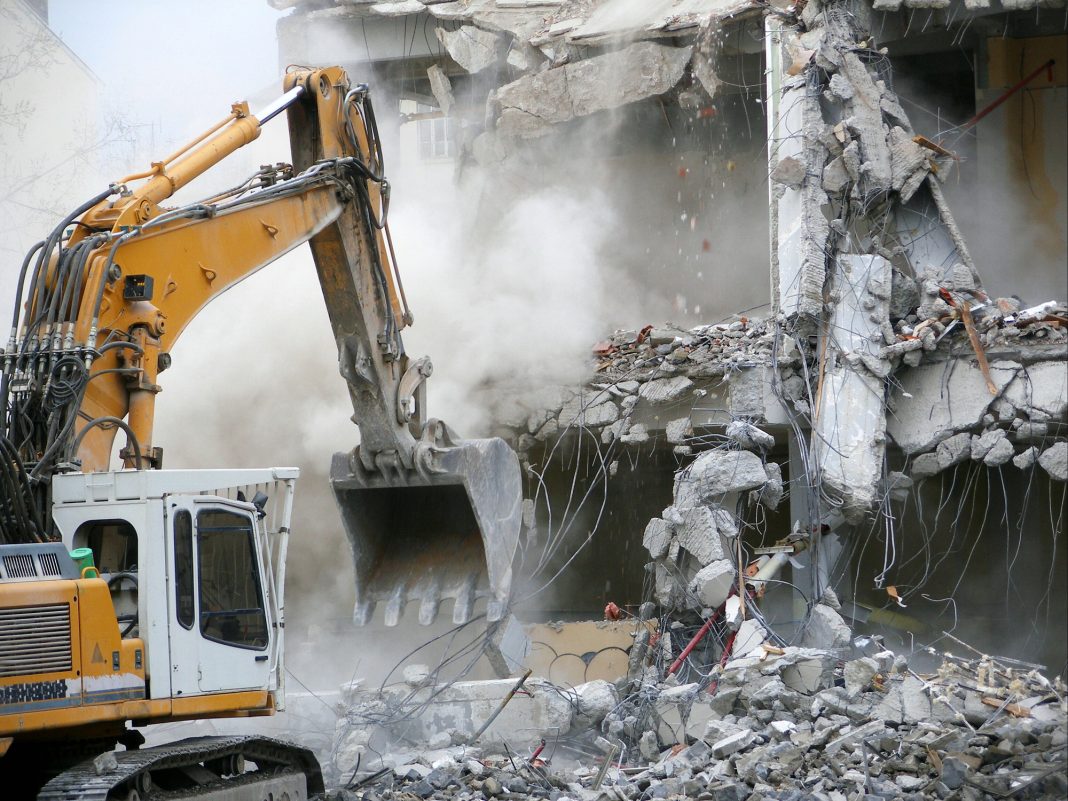Ben Griffiths, SHE and Operations Director, Rye Demolition, looks at how the demolition industry can address climate change targets
In November, the 2022 United Nations Climate Change Conference took place in Sharm El Sheikh, Egypt. The tone was downbeat from the start, as António Guterres, the Secretary-General of the United Nations, stated on the opening day that the “global climate fight will be won or lost in this crucial decade – on our watch”. Much of the talks centred around concerns that many countries were already backtracking on the previous year’s pledges. However, the UK’s Prime Minister, Rishi Sunak, made clear that the UK was committed to reducing its emissions by at least 68% by 2030. This ambitious target was set in 2020 and is key to ensuring the UK achieves net zero by 2050, the fastest rate of any major economy.
This goal was originally outlined in the government’s net zero strategy, “Build Back Greener”, with each sector of the economy being tasked to substantially reduce their Co2 emissions. For the built environment sector, which accounts for 25% of the UK’s greenhouse gas emissions, there is no shame in admitting that some collective big steps must be taken. Much like our construction and real estate colleagues, the demolition industry is well aware of its environmental responsibilities and is taking action to meet them. From our trade body, the National Federation of Demolition Contractors (NFDC), advocating for its members to commit to “Journey to Zero” targets, to companies like us, who are making the switch to low-emission fuels, we’re all clear about how we want our future to look…and it’s green.
While the popular image of demolition is of buildings crashing down to earth with the push of a button, the reality is that it is a well-planned and highly controlled activity. Indeed, the same can be said for how the waste from a site is disposed of, with around 98% of materials able to be recycled rather than sent to landfill. Wood, for example, can be reused in future builds or burnt for fuel. Metal, meanwhile, can be melted down, purified, and put to work elsewhere, while aggregates like brick and concrete can be crushed and used to form pile mats for future developments.
As the UK takes the lead in combatting climate change, there has been much debate about how best to achieve net zero. While much of it is plausible, some suggestions need to be taken with a pinch of salt, especially where the demolition industry is concerned.
There’s no escaping it
For example, the Environmental Audit Committee (EAC) earlier this year expressed its fears that “reforms to permitted development (PD) rights appear to have created an incentive for demolition and new-build over retrofit.” This led the EAC to recommend that the retrofit and reuse of buildings should be prioritised over new builds, to keep carbon locked in, rather than released into the atmosphere.
While, in most cases, they are not as energy efficient as new buildings, and the cost of renovating them is typically high, there can be no question that retrofitting and reusing empty structures will play a key role in meeting the UK’s green agenda. However, it is important to understand that, in favouring the retrofit and reuse of buildings, we also keep in mind that demolition continues to be an essential activity in the construction industry, and is only ever used sparingly. I say this because there have been calls, in the name of sustainability, for demolition to be completely halted and replaced entirely by retrofitting.
Work with us, not against us
Unfortunately, such thinking is neither realistic nor reasonable. Firstly, it is important to understand that buildings are not being demolished “willy nilly” or with joyful abandon, but only ever when all other options have been discounted. For example, when a structure has weak foundations that are beyond repair or contain materials that are hazardous to human health. Doing so allows purpose-built, modern new homes and commercial premises to be built in their stead. When such cases arise, it is highly unlikely that retrofitting will be a suitable option to deal with them.
Secondly, like all industries, demolition is quickly adapting to the carbon agenda and is already making progress in reducing its footprint. Given there is no escaping the need for demolition, the industry should be supported in its sustainability efforts. The EAC’s retrofitting agenda is admirable, but it risks demonising demolition. This will only impact industry investment in sustainable practices, leaving it on the back foot, rather than a step ahead on the road to net zero.
Protecting our shared environment is right, but we must be realistic. We cannot avoid demolition, but we can reduce its environmental impact. That means working together with the government and other stakeholders to make it greener and more accountable, rather than trying to shut it down. The demolition industry is fully aware of its responsibilities and already acting on them, but we can only be successful if our efforts are acknowledged, supported, and encouraged.











